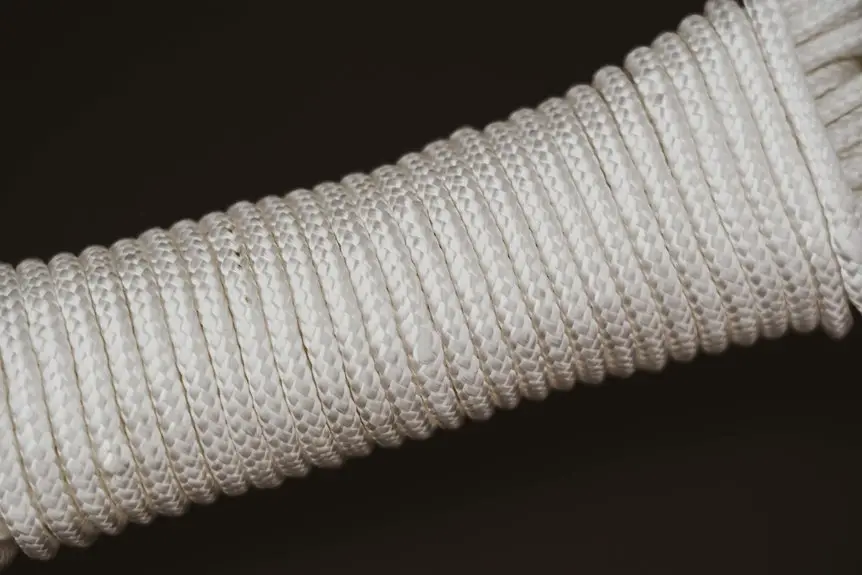When it comes to natural fibers, you might wonder which one stands out as the strongest. Hemp often takes the lead, boasting impressive durability and elasticity. But what makes it superior to other fibers like cotton or silk? Understanding its characteristics and historical significance can reveal much about its potential uses. Let’s explore what sets hemp apart and why it’s becoming a preferred choice for sustainable textiles.
Table of Contents
Key Takeaways
- Hemp is considered the strongest natural fiber, known for its exceptional tensile strength and durability.
- Linen, derived from flax, also boasts high strength and moisture-wicking properties, making it a resilient choice.
- Cotton, while softer, lacks the tensile strength of hemp and linen but is still a reliable natural fiber.
- Strong natural fibers like hemp and linen offer longevity, reducing the need for frequent replacements.
- Choosing strong natural fibers contributes to an eco-friendly lifestyle due to their biodegradable nature and minimal environmental impact when sustainably sourced.
Characteristics of Strong Natural Fibers
When you consider strong natural fibers, you’ll notice several key characteristics that set them apart.
Strong natural fibers stand out due to their durability, elasticity, breathability, and eco-friendly properties.
These fibers, like cotton, linen, and hemp, boast remarkable tensile strength, making them durable and reliable for various applications. They’re not just tough; they also possess a natural elasticity, allowing them to bend without breaking.
You’ll find that strong natural fibers are often resistant to wear and tear, which means they last longer, even with frequent use. Additionally, they’ve breathability, keeping you comfortable in different climates.
Their natural moisture-wicking properties help manage sweat, making them ideal for active wear. Finally, these fibers are biodegradable, contributing to an eco-friendly lifestyle.
When you choose strong natural fibers, you’re opting for strength and sustainability combined.
Comparison With Other Fibers
Natural fibers, such as cotton, linen, and hemp, stand out in comparison to synthetic fibers like polyester and nylon, primarily due to their strength and sustainability.
You’ll find that natural fibers offer breathability and comfort that synthetic options often lack. While cotton is widely popular for its softness, linen excels in moisture-wicking properties, making it ideal for hot climates.
Hemp, on the other hand, boasts remarkable durability and is environmentally friendly, requiring fewer resources to grow.
Synthetic fibers, though often cheaper and easier to care for, may not provide the same level of comfort or biodegradability.
When choosing fabric, consider how natural fibers not only enhance your wardrobe but also contribute positively to the environment.
Strength and Durability
While many might think of softness and comfort first, strength and durability are essential factors when choosing fabric. You want a material that can withstand daily wear and tear, maintaining its integrity over time.
Natural fibers like hemp and linen excel in these areas, offering remarkable resilience without sacrificing comfort.
Natural fibers such as hemp and linen provide exceptional durability while ensuring comfort, making them ideal fabric choices.
Consider the emotional impact of your fabric choice:
- Confidence: When you know your fabric is strong, you feel assured in its longevity.
- Sustainability: Choosing durable materials reduces waste, making you feel good about your impact on the planet.
- Quality: Investing in strong fabrics means you’re investing in quality, resulting in fewer replacements over the years.
Ultimately, strong fabrics enhance both your wardrobe and your peace of mind.
Historical Use and Production
Throughout history, people have relied on strong natural fibers for various applications, from clothing to shelter.
You’ll see how ancient civilizations cultivated these fibers using techniques that have evolved over time.
Understanding this background can give you a deeper appreciation for the fibers we use today.
Ancient Fiber Applications
For centuries, civilizations have harnessed the strength and versatility of ancient fibers, weaving them into the fabric of daily life.
You’ve likely marveled at how these materials shaped cultures, providing not just utility but also a sense of identity. Ancient fibers like flax, silk, and hemp served numerous purposes, from clothing to shelter, enhancing lives in profound ways.
- They wrapped warriors in protective garments, symbolizing strength and resilience.
- They adorned royals, showcasing the beauty and artistry of their time.
- They connected communities through shared practices of weaving and crafting.
Each fiber tells a story, reminding you of the ingenuity and resourcefulness of those who came before you.
Embrace the legacy of these ancient materials as they continue to inspire modern fabric design.
Cultivation Techniques Over Time
As ancient civilizations thrived, they developed specialized cultivation techniques that greatly influenced fiber production. You can see how these methods evolved over time, enhancing the quality and strength of natural fibers. For instance, the Egyptians mastered flax cultivation, while the Chinese focused on silk production. Here’s a quick overview:
| Civilization | Fiber Type | Cultivation Technique |
|---|---|---|
| Ancient Egypt | Flax | Irrigation and crop rotation |
| China | Silk | Sericulture and mulberry farming |
| India | Cotton | Hand-picking and ginning |
| Peru | Alpaca | Selective breeding |
These practices not only improved yield but also paved the way for the fabrics we cherish today. Embracing these historical techniques helps us appreciate the fibers’ strength and beauty.
Environmental Impact
Although natural fibers are often praised for their biodegradability and lower environmental impact compared to synthetic materials, their cultivation and production still pose significant challenges.
You mightn’t realize how water-intensive some crops are, leading to depletion of precious resources. Additionally, the use of pesticides and fertilizers in fiber farming can harm local ecosystems.
- The heartbreaking loss of biodiversity due to monoculture practices.
- Communities affected by water scarcity as crops demand more than nature can provide.
- The struggle of farmers trying to balance sustainable practices with economic pressures.
When you choose fabrics made from natural fibers, consider not just their environmental benefits but also the hidden costs that come with their production.
Your choices matter.
Applications in Textiles
Understanding the environmental implications of natural fiber production leads to a deeper appreciation of their diverse applications in textiles.
These fibers, like hemp and linen, offer durability and breathability, making them ideal for everyday clothing and outdoor gear. You’ll find cotton widely used in casual wear due to its softness and versatility. For luxury items, silk remains a top choice, providing elegance and comfort.
Natural fibers also excel in home textiles; consider using wool for warm blankets or jute for eco-friendly rugs. Additionally, advancements in technology have introduced blends, enhancing performance while preserving the eco-friendliness of natural materials.
Frequently Asked Questions
What Are the Benefits of Using Natural Fibers Over Synthetic Fibers?
Using natural fibers offers breathability, comfort, and biodegradability, making them better for the environment. They’re often softer against your skin, and you’ll find they can regulate temperature more effectively than synthetic options.
How Do Strong Natural Fibers Compare in Cost?
Imagine picking apples; the finest ones cost more but last longer. Similarly, strong natural fibers often come at a higher price, yet their durability and performance can make them a worthwhile investment for your projects.
Are There Any Allergens Associated With Natural Fibers?
Yes, some natural fibers can trigger allergies. For instance, wool might irritate sensitive skin, while certain plant fibers may cause reactions if you’re allergic to specific plants. Always test new materials to guarantee comfort and safety.
How Should Strong Natural Fibers Be Cared For?
You should wash strong natural fibers gently in cool water, avoiding harsh detergents. Air-drying helps maintain their strength and shape. Store them in a cool, dry place to prevent damage from moisture and pests.
Can Strong Natural Fibers Be Blended With Synthetic Fibers?
Yes, you can blend strong natural fibers with synthetic fibers. This combination enhances durability, flexibility, and comfort, giving you versatile fabrics suitable for various applications. Experimenting with blends can lead to innovative textile solutions you’ll love.
- The Use of Nonwovens in Construction and Civil Engineering - July 11, 2025
- The Use of Nonwovens in Construction and Civil Engineering - July 11, 2025
- The Use of Nonwovens in Construction and Civil Engineering - July 11, 2025




